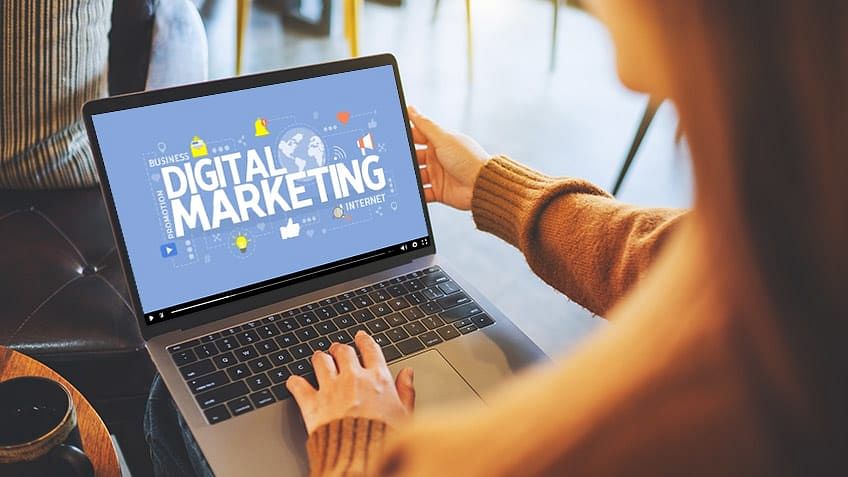Unleash Imagination with The Ad Firm Web Design Agency: Crafting Digital Masterpieces
Unleash Imagination with The Ad Firm Web Design Agency: Crafting Digital Masterpieces
Blog Article
Enhance Individual Experience and Drive Web Traffic With Receptive Website Design
In today's digital landscape, where customers are accessing web sites from a wide variety of devices, receptive internet layout has come to be much more important than ever before. With its ability to adapt and seamlessly readjust to different display sizes, receptive design not just enhances user experience but additionally drives web traffic to your website.
Why Receptive Web Style Issues
Responsive website design is a necessary facet of modern-day web advancement due to its capacity to guarantee optimum user experience throughout numerous devices and screen dimensions. With the proliferation of smart devices, tablets, and other mobile tools, it has actually become crucial for web sites to adjust and provide seamless capability no matter of the gadget being utilized.
The key reason that responsive website design matters is that it enables customers to have a consistent and satisfying surfing experience, despite the device they are using. A responsive internet site automatically changes its design, content, and design elements to fit the display size and resolution of the gadget, ensuring that users can easily browse and engage with the web site with no trouble or frustration.
Additionally, responsive website design likewise plays a considerable duty in seo (SEARCH ENGINE OPTIMIZATION) Internet search engine, such as Google, prioritize sites that are mobile-friendly and responsive in their search results page. By incorporating receptive layout concepts, sites can improve their presence and position, causing enhanced organic website traffic and possible clients.

Boosting Customer Engagement Through Responsive Style
Maximizing customer engagement is an essential goal of receptive style, as it makes sure that users can easily gain access to and engage with web site web content on any kind of gadget. With the raising use tablets and smartphones, it is important for websites to adapt to different screen sizes and resolutions. Responsive layout allows websites to immediately readjust their format and web content to supply a smooth individual experience throughout gadgets.
Among the primary methods responsive design increases user engagement is by minimizing tons times. With a responsive site, users do not need to wait on separate mobile versions to load, resulting in much faster accessibility to material. This enhanced speed leads to greater individual satisfaction and urges them to invest more time on the website.
In addition, receptive style enhances customer involvement by enhancing navigation and user interface (The Ad Firm). When a site is developed responsively, food selections and switches are maximized for touch communications, making it easier for customers to browse and connect with the site on their mobile devices. This instinctive and easy to use experience keeps individuals engaged and motivates them to explore more of the website
Furthermore, receptive layout enables better material presence and readability. By adjusting the layout and font style dimensions to different gadgets, receptive sites make sure that users can quickly read and comprehend the web content. This enhances individual interaction by minimizing the need for zooming or scrolling to review the message.
Increasing Site Traffic With Responsive Internet Layout
With the expanding appeal of mobile tools, having a website that is responsive to different display dimensions and resolutions is crucial for driving boosted web traffic. In today's digital landscape, individuals are accessing sites from a range of devices such as smart devices, tablet computers, and desktop. Each of these gadgets has different screen dimensions and resolutions, and if your website is not created to adjust to these variations, it can cause a bad individual experience and a loss of potential web traffic.
Receptive web layout guarantees that your web site looks and works ideally across all gadgets. By making use of flexible grids, liquid photos, and media queries, receptive style enables your website to instantly change its design, material, and navigation to fit any kind of display size. This means that individuals will have a smooth browsing experience no matter whether they are using a large desktop computer or a small mobile phone computer system.
Crucial Element of Efficient Receptive Style
Efficient receptive layout includes several key aspects that design firm guarantee a seamless individual experience throughout various devices. This permits content to be shown in a readable and visually attractive fashion on any device.
Another essential aspect is media inquiries. These enable developers to use various designs and formats based upon the qualities of the individual's device, such as display dimension and alignment. By using media queries, designers can optimize the presentation of content for every gadget, making certain that it is conveniently obtainable and legible.
Receptive photos are additionally essential in effective receptive style. Photos that are too huge can reduce page lots times on mobile phones, while images that are also small might show up pixelated on bigger displays. By utilizing strategies such as receptive picture resizing and lazy loading, designers can ensure that pictures are appropriately sized and optimized for every gadget.
Last but not least, efficient responsive layout entails a mobile-first technique. This implies focusing on and creating material for mobile phones first, and after that broadening and improving the style for bigger screens. This approach makes certain that one of the most essential web content is quickly accessible on smaller sized screens, while still giving a rich experience on bigger gadgets.
Best Practices for Applying Responsive Internet Design
Applying responsive website design requires cautious factor to consider of various finest techniques to make certain an ideal user experience across different tools. Below are some crucial best techniques to comply with when executing receptive website design.
First of all, it is crucial to prioritize mobile individuals. With the increasing dominance of mobile tools, designing for mobile-first has actually come to be important. Begin deliberately for smaller screens and then considerably enhance the layout for larger displays.

Another crucial best technique is to optimize photos for different screen resolutions. Huge images can reduce down the loading time of your internet site, particularly on smart phones with slower links. Usage responsive images that can be resized based on the gadget's display resolution to boost performance.
Furthermore, examination your web site on various devices and display sizes to guarantee a regular and seamless experience. There are numerous testing devices offered that can aid you determine any kind of issues and make required changes.
Last but not least, focus on usability and access. Guarantee that your web site is very easy to browse, with concise and clear material. Make sure that your site comes to individuals with disabilities and follows ease of access guidelines.
Final Thought
In verdict, responsive internet design plays a crucial function in enhancing customer experience and driving web traffic to sites. By taking on responsive style concepts, sites can ensure optimum checking out experiences throughout various tools, leading to raised individual involvement.
Optimizing individual involvement is an essential objective of receptive design, as it makes certain that users can quickly accessibility and communicate with internet site content on any type of gadget. Receptive design allows web sites to instantly readjust their layout and material to offer a smooth user experience across gadgets.
Furthermore, receptive layout enhances user interaction by enhancing these details navigating and customer interface.Receptive images are additionally essential in effective receptive style. By taking on responsive design concepts, web sites can make sure optimal seeing experiences across different devices, leading to enhanced individual involvement.
Report this page